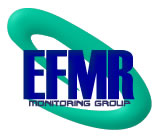Friday, May 30, 2008
PUC Releases Annual Report on Alternative Energy Portfolio Standards Act
U.K. waste next in line for Utah?
A day after the head of EnergySolutions Inc. pledged to Congress he would fill no more than 5 percent of the company's Utah facility with radioactive waste from foreign countries, a British lord told Parliament the company offered to bury some of the United Kingdom's waste in the Utah desert. A record of Parliament's proceedings May 21 reveals Lord Charles Patrick Fleeming Jenkin, of Roding, said he had talked with the company about taking some of Britain's low-level radioactive waste. "EnergySolutions has told me that, while spent fuel and the waste from fuel reprocessing must go into a deep repository in this country, much of the so-called intermediate waste does not need to be managed in that way but can be either recycled for use in new nuclear [plants] or transported to EnergySolutions' own disposal facility, called Clive, in the Utah desert," Jenkin said.The Salt Lake Tribune
Tuesday, May 27, 2008
At $24 billion in debt, what's next for TVA?
TVA lost its federal appropriations for power in 1959 through a congressional act and became completely self-financed in 1999. It also started racking up debt, which in 2007 reached $24.7 billion, about 82 percent of the maximum $30 billion in debt. Many blame that debt on TVA's overeager nuclear program from the 1970s when, at one point, TVA had plans to build 17 nuclear power plants. With escalating construction and energy costs, the agency eventually cut its nuclear program back and built a total of six reactors, half of which never functioned, at a cost of $6.3 billion. Now that TVA has entered another nuclear renaissance and is seeking to get three nuclear reactors operational, many worry that TVA's debt might only increase.TimesDaily
Tuesday, May 20, 2008
Exelon and EFMR Sign Community Based Agreement
- Resources will be provided to allow for the independent environmental monitoring and the professional training of local community organizations.
- Continue a long-standing Exelon policy that ensures that no storage of low-level or high-level radioactive waste from other nuclear power plants will take place at Three Mile Island for a period of ten years from the date that the NRC renews TMI Unit 1’s license.
- Exelon will not oppose the decommissioning of TMI Unit 2 during the period of extended operation of TMI Unit 1, unless it adversely impacts the safe operation of TMI Unit 1.
- Exelon will extend its regional profile, and increase community investment over the next four years.
- Exelon and EFMR will meet annually to review the status of matters relating to this agreement, provide mutual updates, resolve open issues and discuss workforce staffing.
Saturday, May 17, 2008
NRC Issues New Guidance On Release Of Thyroid Patients Administered Radioactive Iodine
The Nuclear Regulatory Commission has issued new guidance to medical licensees to strengthen existing precautions against the possibility that infants and young children who come in contact with thyroid cancer patients may receive unnecessary doses of radiation.
The guidance was prepared in response to concerns raised by the International Commission on Radiation Protection, most recently in its 2007 recommendations on radiation protection, and in a Petition for Rulemaking submitted by Peter G. Crane.
The guidance recommends that patients given therapeutic doses of radioactive iodine-131 should avoid direct or indirect contact (for example, through shared living space) with infants and young children for a specific period of time following the therapy. The guidance also recommends that physicians should consider hospitalizing patients whose living conditions may result in the contamination of infants and young children.
Monday, May 12, 2008
Costs may slow nuclear upswing
As crude oil prices leapt last week to over $120 a barrel, and one analyst suggested the price might soon reach $200, America would seem poised for a nuclear power resurgence.But enthusiasm for a nuclear future was muted at an industry conference last week in Chicago, as executives acknowledged that financial, regulatory and waste-storage hurdles have raised uncertainties about costs. Other factors increasing the expense of construction include high demand for nuclear plants among emerging countries, limited supplies of reactor parts and increased prices for iron, steel and concrete.
As a result, the estimated price of a nuclear reactor has more than doubled to upwards of $9 billion in less than a year, according to industry estimates.
Monday, May 5, 2008
Nuclear settlement money little solace for survivors in Armstrong County
Johnson and some 250 plaintiffs soon will receive payments from a $27.5 million settlement with Atlantic Richfield Co. for illnesses, deaths and property damages caused by radioactive emissions from two former nuclear fuels plants in Armstrong County started by the Nuclear Materials and Equipment Corp. in 1959.Still, they don't feel rich.
Those who are sick from brain tumors, cancer and beryllium disease say they're too weak and miserable to spend it on something fun, such as a vacation. Disheartened survivors are grappling with grief, anger and guilt.
TMIA Comments on Environmental Scoping
The core melt accident occurred at TMI-2 in March-April 1979 was followed by a tax payer and ratepayer subsidized $1 billion de-fueling process. Post De-fueling Monitored Storage was approved in 1993. There is no significant dismantlement underway. GPU Nuclear retains ownership of TMI-2, and contracts to AmerGen for maintenance and surveillance activities. Both units are currently expected to be decommissioned together in 2014. Most of spent fuel was removed except for debris, defuel and contaminated parts in the primary systems. The fuel is currently in storage at the Idaho National Engineering and Environmental Laboratory. The Department of Energy has taken title and possession of the fuel.Testimony of Eric J. Epstein, Chairman, Three Mile Island Alert Inc.
